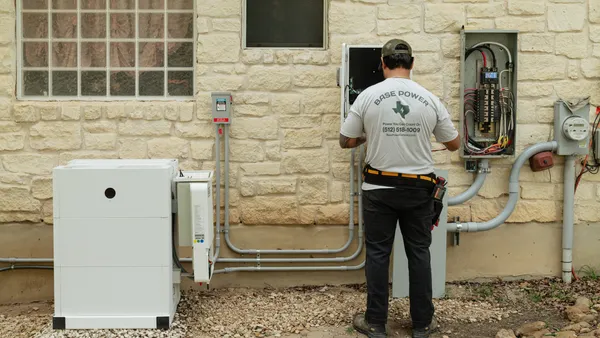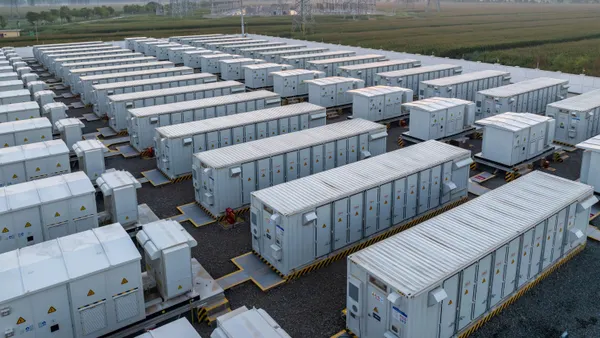The following is a contributed article by Nick Schlag, director at consulting firm Energy and Environmental Economics (E3), along with Dan Mullen, consultant and Kush Patel, partner. E3 colleagues Sandy Hull, Gabe Mantegna and Zach Ming also contributed to the article.
Energy storage is progressing by leaps and bounds as a potentially transformative resource for the power sector. Recent utility-scale storage announcements from Southern California Edison (SCE) and Florida Power & Light (FPL) come on the heels of a report by Bloomberg New Energy Finance highlighting the steep drop in the cost of storage.
A more holistic, analytically informed approach to storage deployment — better insight into its specific system benefits and more robust approaches to assigning its capacity value, among other recommendations discussed herein — will ease growing pains and maximize value as the U.S. storage industry expands dramatically over the next few years.
Such growth will also be aided by state policies, including bridge incentives and "Clean Peak" standards, and by investors who better understand energy storage as an asset class and the revenues it could deliver over time.
Beliefs about storage tend to cluster around the poles: it can always substitute for gas plants, or it never can because it needs other resources to charge. Treatment of storage also differs considerably across states and markets.
PJM's 10-hour duration requirement for capacity resources, for example, effectively shuts storage out of that market entirely. And while California's 4-hour requirement and supportive policies have catalyzed its storage market, California and other early-action states will need to revisit their thinking around storage, and maybe sooner than they think. (Storage, like most resources, experiences diminishing returns the more it is added to a system; more on this shortly.)
Despite some challenges, storage offers a compelling, reliable alternative to firm gas capacity well beyond projected near-term installation levels. But storage's substitutability for gas is not infinite. Getting the most out of energy storage — identifying the storage investments that provide the greatest value to the system, especially at higher penetration levels — will require significantly more sophistication than decision-makers currently employ.
Yes, energy storage has capacity value
Energy storage is often discussed as a replacement for new or retiring gas peaking units, as in the cases of SCE and FPL, above. (It can also provide fast-response services that gas and other conventional resources can't, but those aren't the focus of this article.)
Storage's substitutability for gas hinges on its "capacity value," or its projected contribution to maintaining reliability. This is typically measured by "effective load carrying capability" (ELCC), a metric used in reliability planning to indicate the percentage of a resource that can be deemed "perfect capacity" — available anytime to keep the same level of reliability.
The following chart shows some of E3's recent findings on storage capacity value. The horizontal axis shows market penetration: the amount of installed storage capacity as a percentage of system peak. The vertical axis shows storage capacity value (as indicated by ELCC).
The data, normalized for system size, comes from several planning analyses of state, regional and utility power systems across North America using a sophisticated proprietary tool for reliability analysis. Half of the cases analyzed today's power systems, while the other half analyzed future systems subject to certain renewable and/or greenhouse gas constraints. The chart focuses on 4-hour storage because it is the most common configuration in both current and planned installations.
The chart shows that in most systems studied, 4-hour energy storage consistently provided 90 to 100% capacity value — at or near "perfect capacity" — at storage penetrations up to about 5% of system peak. Further, storage retained considerable capacity value at penetrations significantly higher than that.
This was true despite considerable differences in grid size, resource mix, load shape, peak timing and duration, and timeframe of the analysis. The exception was the hydro-rich Pacific Northwest, where storage capacity value maxed out at just over 80% and dropped sharply (due to the large amount of storage that's implicit in the hydro).
The chart also shows that storage can't substitute for firm peaking capacity indefinitely. In every jurisdiction, the capacity value of storage declines as the amount of installed storage increases. This is because storage tends to flatten system peaks, requiring it to discharge over progressively longer durations and reducing the marginal capacity value of additional storage. (As a "use-limited" resource, storage can't dispatch indefinitely without recharging.)
Unquestionably, some amount of storage can provide a one-for-one replacement for firm peaking capacity. But how much?
Properly answering that question is well beyond the scope of this article, but consider a high-level observation: our analysis of EIA data for last year's (non-coincident) peak load day, in each U.S. region, revealed that 4-hour storage could have reduced peak load by at least 21 gigawatts (GW) across the U.S. in 2018, and that 6-hour storage could have reduced it by at least 40 GW. That's a lot of storage.
Toward more rigorous, consistent treatment of storage
Current practice must evolve to precisely define and cost-effectively capture storage benefits. In most markets, for example, the capacity values assigned to storage reflect general rules of thumb related to duration rather than any kind of organized, consistent methodology. Ultimately, these simple heuristics could compromise reliability or unnecessarily drive up costs.
Consider the decision between investing in a (cheaper) 4-hour battery or a 6-hour battery with higher capacity value. This is a complex question involving both reliability concerns and economics that today's evaluation frameworks should address but largely don't. Doing so would require coordinated analysis of the costs and multiple benefits of storage investments, including the avoided cost of capacity, the cost premium associated with longer-duration storage, and the incremental operational value that extended duration could provide.
Bringing more rigor into our thinking and treatment of storage will help decision-makers optimize the type, size, and timing of storage investments. It can also guide market participation rules and eligibility requirements.
As a starting point, regulators and policy-makers should require careful analysis of how much and what kind of storage is most beneficial to the system, and how these benefits may evolve over time. They will also need to balance the value of storage to the system against the revenue certainty investors need to support deployment. And because storage can sometimes but not always replace natural gas generation, new investments in these resources should be evaluated on a consistent, transparent basis.
System operators should develop a robust, enduring framework for capacity accreditation that both captures differences in storage duration and evolves as storage penetration grows and the overall system's loads and resources change. Frameworks should also allocate capacity value among individual storage resources, and between storage and renewables, since their combined capacity value may exceed the sum of their individual values, as NREL's research demonstrates.
Utilities and procurement entities should update "least cost" methods of evaluating resources to account for the interactive effects of portfolio resources on storage capacity value and the synergies between storage and renewables. Storage RFPs should be structured flexibly to allow developers to offer a range of different products, and procurement evaluation methodologies should capture capacity value tradeoffs of different durations.
Increasing operational experience, financial data and technical analysis of wholesale storage have enabled much more sophisticated insights into its value and applications. Leveraging these will help decision-makers prioritize the best applications of a complex resource.













